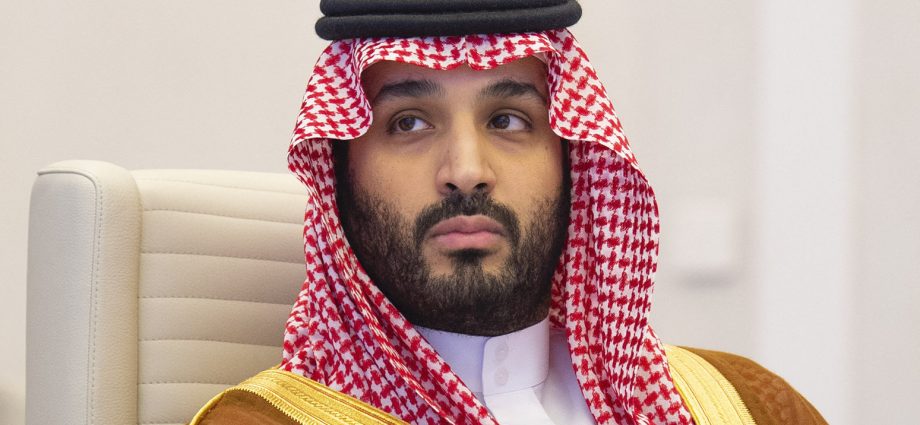
Now, perhaps more than ever, the world needs big dreamers with big ideas.
They change things. They challenge redundant orthodoxies, through sudden revolution, not slow evolution.
Big dreamers gave us everything from internal combustion, powered flight and spaceships to electricity, nuclear power, antibiotics and vaccines.
One of the first big dreamers lived some 6,000 years ago, a long-forgotten Sumerian in Mesopotamia who at a stroke revolutionized transport, warfare and agriculture by inventing the wheel.
The trouble with big ideas is that they provoke a certain amount of skepticism. Take the reaction of many in the Western media to the unveiling of designs for The Line, the “revolution in urban living” at the heart of Neom, the Saudi mega-project taking shape in the northwest of the country.
The response was depressingly predictable, the usual sneers and jeers that accompany pretty much any forward-looking announcement from the kingdom.
The Line was a “science-fiction jumble” that had “left architects aghast,” a “dystopia portrayed as utopia … fantastical … 100 miles of real-estate clichés.”
Perhaps the dumbest comment came from The Washington Post, which headlined its column “Saudi crown prince wants you talking about his ‘city of the future.’”
So that worked, then.
Curiously, Crown Prince Mohammed bin Salman, who is also chairman of the board of directors of Neom, has a lot in common with the 19th-century English clerk-turned-social reformer Ebenezer Howard.
Depressed by the squalor and slums of Victorian cities, in 1898 Howard published To-Morrow: A Peaceful Path to Real Reform, a blueprint for a utopian garden city in which people could live and work happily and harmoniously side by side with nature.
The result was the town of Letchworth, the world’s first garden city, on which work began in 1903. An inspiration and destination for town planners around the world, it thrives to this day in the Hertfordshire countryside, just north of London.
Every home had a decent-sized garden, every facility and workplace was within walking distance and open green spaces and zoned industrial areas ensured Letchworth’s inhabitants lived longer, healthier lives than their big-city peers.
Howard would have empathized with Prince Mohammed. When Howard first began trying to interest investors in developing Letchworth, he was roundly mocked, by the same Western media that now find it so difficult to open their mind to the possibilities represented by The Line.
When Prince Mohammed speaks about The Line, one can almost hear the echo of Howard in his words.
“After the Industrial Revolution, cities prioritized machines, cars and factories over people,” the prince has said. But “why should we sacrifice nature for the sake of development? Why should 7 million people die every year because of pollution?”
And, in line with his Vision 2030 blueprint for diversifying the economy of Saudi Arabia away from reliance on fossil fuels, “we need to transform the concept of a conventional city into that of a futuristic one,” with every detail designed to respond to the challenges of climate change.
Hard to argue with that. So instead, many have chosen to mock it.
True, the hyper-ambitious designs for The Line, revealed in July, are not for the small-minded. An army of the world’s leading engineers, architects and planners is working on the concept and getting one’s head around the sheer scale and out-of-the-box technical audacity of what is emerging requires a degree of open-minded imagination.
Nothing like The Line has ever been conceived, let alone seen. Just 200 meters wide, and 500 meters tall, it would be a revolutionary urban environment, a single, massive structure, running eastward inland from the Gulf of Aqaba for 170 kilometers, a perfectly straight line cutting through coastal desert, mountain ranges and valleys.
Powered entirely by renewable energy, it is designed to house 9 million people by 2045. Each one of them would never be more than a five-minute walk away from everything they need, all housed in the layered structure – including parks, schools, homes, offices, medical facilities, pools, sports facilities, shops and entertainment.
On a vast scale, this is Letchworth, writ large across the Arabian Peninsula.
With a small footprint of just 34 square kilometers – just 2% of any comparably sized conventional city – The Line’s impact on the natural environment would be further reduced by a mirrored facade, helping it to blend in visually with the surrounding landscape.
And The Line would be the end of the line for cars. Should residents need to travel from one end to the other of this linear city, they would do so on board a high-speed train that made the journey in just 20 minutes.
Much of the coverage that has greeted the designs of The Line has speculated that it will never be built. It is too fantastic, too futuristic, too … well, too much to hope for, perhaps.
But here’s the thing about big dreamers.
Their dreams don’t even have to come true in order to bring about massive change in the world. To dream big, and to share that dream with the world, is by itself enough to sow seeds, to inspire others to follow and pursue their own dreams.
Jonathan Gornall is a British journalist, formerly with The Times, who has lived and worked in the Middle East and is now based in the UK. Follow him on Twitter @JonathanGornall.

